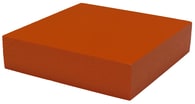Thermal Break Material
(TBM-1)
Steel thermal break. Thermal Break Material (TBM-1) is a thermoset, reinforced composite which can transfer loading conditions up to 30,000 psi and has very good fire properties. This thermal break material is used to reduce conductive heat loss due to thermal bridging in bolted, structural steel connections that pass through the building envelope.
TBM-1 thermal break material conducts heat 820 times less than aluminum, 220 times less than steel and 65 times less than stainless steel. It is compatible with all field applied air barriers, sealants and flashings. Fabreeka-TIM and Armatherm FRR are equivalent to TBM-1. TBM-1 is manufactured in the USA and fabricated in the USA.
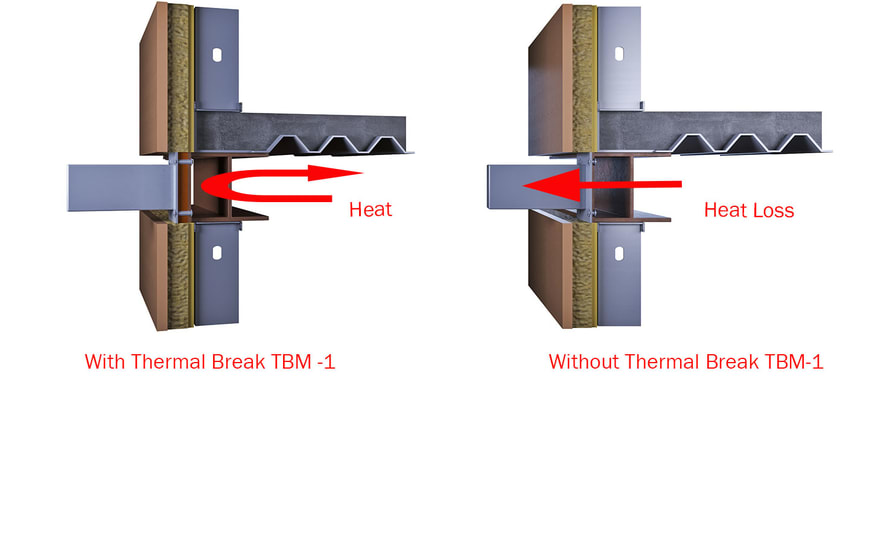
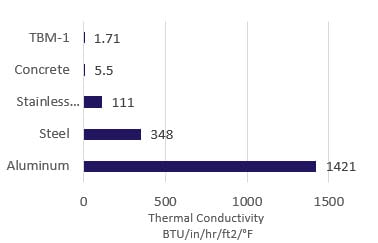
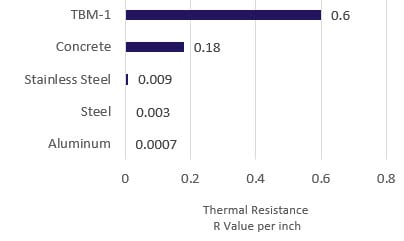
The thermal conductivity of a material is a function of its conductance which helps determine the rate at which heat flows through that material. Heat flow is also dependent on area and temperature.
Conductance is a function of thickness, so to be effective at reducing heat flow through a bolted, steel connection, the thickness of the thermal break is important.
TBM-1 thermal break material is available in several thicknesses to accommodate a wide range of connection details. In any connection design, the goal is to use the appropriate thickness/area which helps meet energy code requirements for the wall or roof assembly.
Links to articles relating to the use of thermal breaks in bolted, steel connections:
Specifying Thermal Break Materials for Bolted, Steel Connections
Designing Steel Connections with Thermal Break Materials

A material used as a thermal break becomes a load bearing element in a bolted, steel connection. It therefore must be capable of transferring normal, moment and shear forces without compromising the connection.
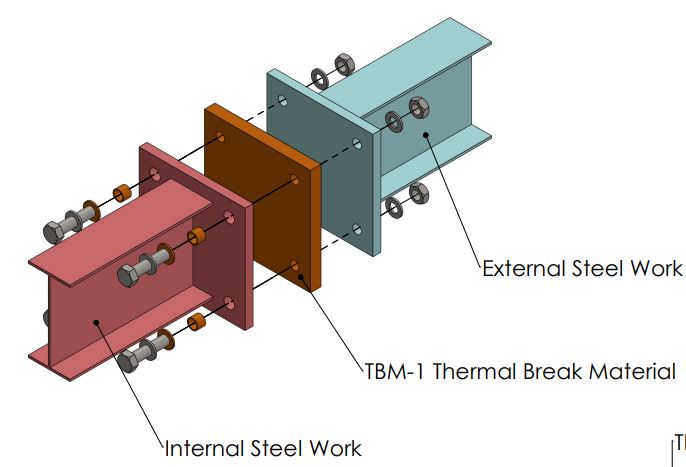
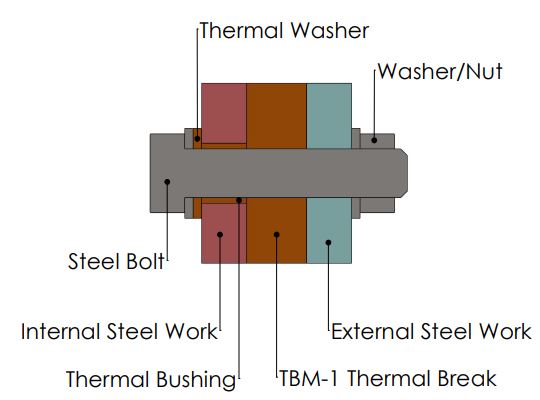
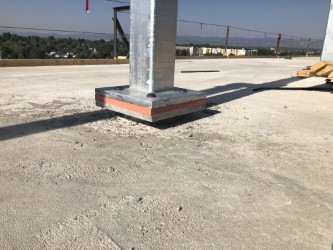
Roof post thermal break
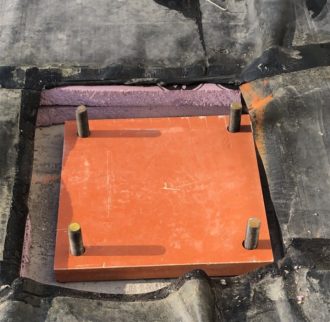
Column base thermal break
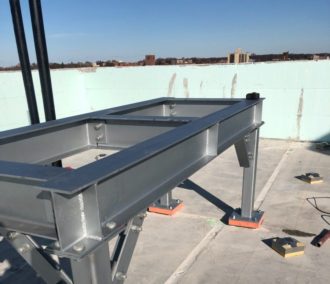
Dunnage post thermal break



